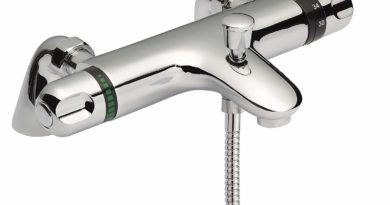Maintenance Considerations for Improved Water Heater Efficiency
Having an efficient and reliable water heater that requires only a simple maintenance routine is every homeowner’s dream. Water heaters are one of the most hard-working elements in a home and we rely on them for regular hot water supply, warm showers, sparkling clean dishes and clean clothes.
Moreover, as people are becoming increasingly aware of the depletion of Earth’s resources, the need to go green and be energy-efficient has become an imperative of a modern lifestyle. One of the most important contributing factors for maximizing energy saving in your home is a high-quality, energy-efficient water heater. Here are the most important maintenance considerations to bear in mind.
Adjusting the thermostat
By adjusting your water heater thermostat to 120 degrees, you will be able to save up to 5% in energy cost for every 10 degrees you reduce the temperature. Moreover, you will lower the risk of you and your family members being scalded by hot water.
Make sure that when you leave town, you also adjust the thermostat by choosing the vacation setting which will keep the pilot light on but not heat the water.
Draining the tank
Draining your hot water tank a few times a year will allow you to remove the debris and sediment inside it. First, turn off the cold water supply and then connect a garden hose to the drain valve. Keep the water running out in a bucket until it becomes clear. If it’s still cloudy, add more water by briefly opening the water supply valve to stir up the leftover sediment, and drain the tank once more. In this way, you’ll have your water heater operate more quietly and efficiently.
Checking the equipment
Whether you’re remodelling your bathroom and upgrading your water heater, or you’re just going about your regular maintenance routine, you need to make sure you inspect the entire equipment.
In case you have decided to upgrade your water heater to a new, more efficient model, there are now many different types available on the market: electric, gas, conventional, tankless, condensing or hybrid. If your home already has gas piping, choosing a gas water heater might be the most viable and cost saving option for you. In that case, ensuring a proper gas hot water installation is your number one priority, so you should rely on experienced local pros, as this Sydney-based plumber, to provide you with the highest quality service.
On the other hand, if your existing hot water heater is relatively new and functioning well, you still need to make sure it continues it service effectively. Be sure to test the temperature-pressure relief valve once a year. Quickly discharge it several times and keep an eye out for potential small leaks from it.
In addition, examine the sacrificial anode rod once every three years by loosening the hex head screw and removing it. You might need to replace the rod in case there is 6 inches or more of the core steel wire exposed, if the rod is thinner than half an inch or it’s coated with calcium.
Insulating older units
It’s recommendable you give your older units additional insulation such as a fibreglass jacket, foil or a denim blanket in order to improve their energy efficiency. Be careful to avoid contact with flue and make sure you also insulate the hot and cold pipes, but don’t cover the top of the gas water heater as the exhaust needs a place to exit.
In general, additional insulation will help you maintain a consistent internal temperature which means your water heater will not have to work harder to raise the water temperature, which will cut your energy bill and save you money in the long run.
With the tips outlined here, you’ll be able to meet your home’s water needs and still be environmentally friendly and energy-efficient.





